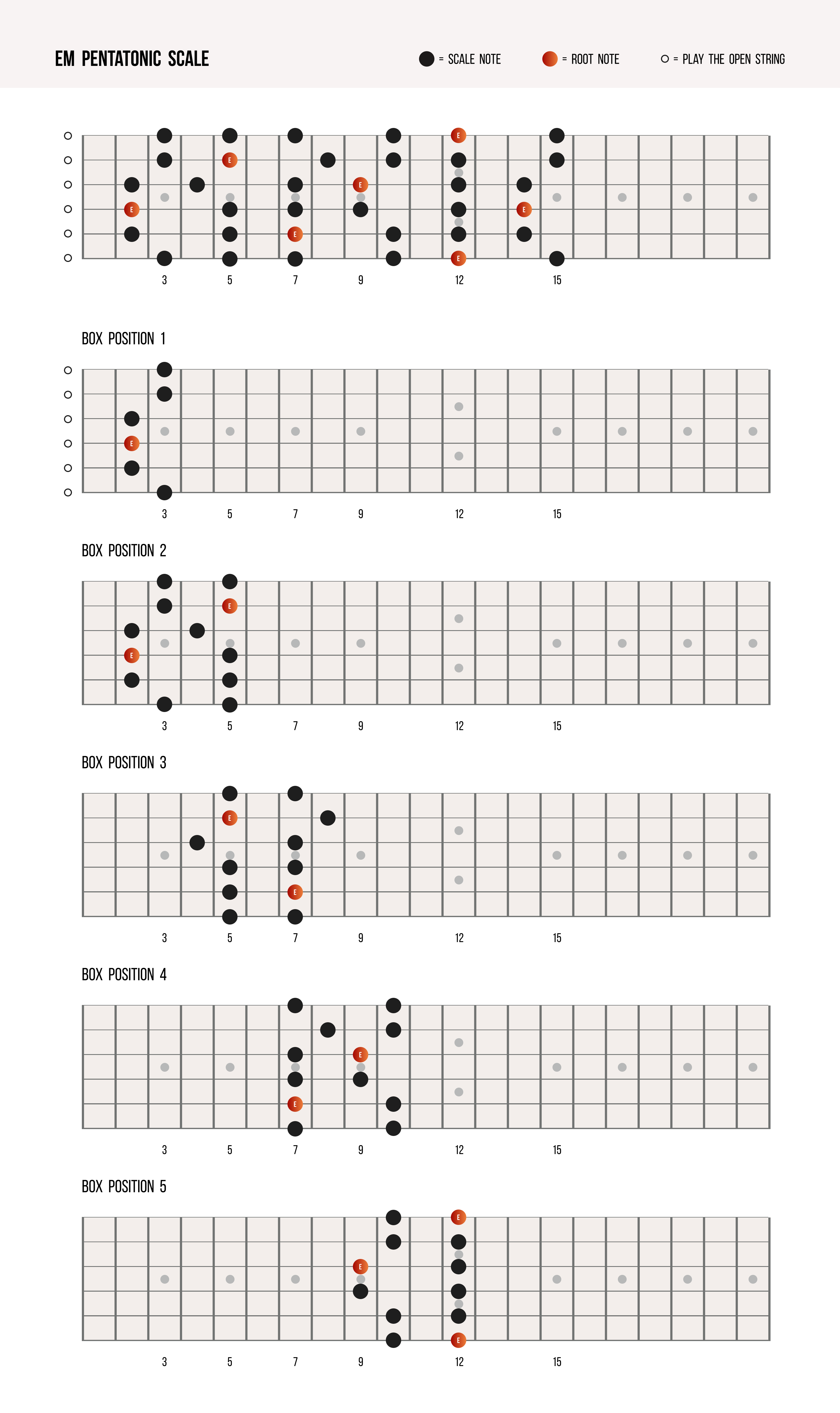So if you’ve been playing guitar for a little while, you might have heard about the Minor Pentatonic Scale. You’re probably already using it regularly in your lead playing. And if you have no idea what I’m talking about, fear not, I’m about to help you level up your lead guitar playing.
The minor pentatonic scale is one of the most popular and versatile tools in a guitarist’s arsenal. It’s a five-note scale (hence pentatonic; “penta” meaning “five” and “tonic” meaning “note”) that creates a strong, expressive sound. Whether you’re playing rock, blues, metal, or even jazz, the minor pentatonic fits perfectly into countless musical contexts.
What it is
It’s a group of 5 notes that sound really good together. Essentially, it’s a simplified version of the natural minor scale. On the guitar, these notes are easy to find and play, and they are used in lots of songs you already know. Together, these 5 notes make up a five note scale that you can use in your lead playing to play over just about most things.
For the theory geeks: As noted above, the 5 notes are derived from the natural minor scale, with the exception of the 2nd and 6th notes. Side by side, we can see the main notes used from the A natural minor.
A natural minor scale consists of these notes: A, B, C, D, E, F, G
A minor pentatonic scale consists of these notes: A, C, D, E, G
Why it sounds great
The minor pentatonic scale works so well because it avoids dissonance. Every note complements the others, so it’s hard to hit a “wrong” note. Its simplicity and emotional depth make it ideal for conveying bluesy, soulful, or raw emotions in your playing. This makes it essential for your lead guitar arsenal when improvising solos or writing melodies that will sound amazing.
For the theory geeks: By omitting the 2nd and 6th degrees of the natural minor scale, the minor pentatonic eliminates intervals that might clash with chords. For instance:
- The 2nd (B in A minor) can clash with the root (A) or minor third (C).
- The 6th (F in A minor) can clash with the fifth (E) or seventh (G).
Shapes across the neck
On the guitar, the Minor Pentatonic scale fits very nicely into 5 neat little boxes across the guitar neck. If you don’t know there already, here’s how the E Minor Pentatonic looks with each box mapped out.

Now you know the scale shapes, have a play through them and see how they feel. If you play over a backing track within the key of Em, you’ll notice how great all these notes sound!
